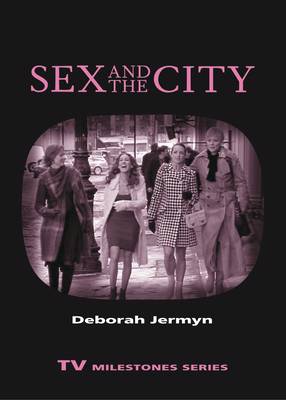
- Afhalen na 1 uur in een winkel met voorraad
- Gratis thuislevering in België vanaf € 30
- Ruim aanbod met 7 miljoen producten
- Afhalen na 1 uur in een winkel met voorraad
- Gratis thuislevering in België vanaf € 30
- Ruim aanbod met 7 miljoen producten
Omschrijving
Examines the full run of Sex and the City and its production background, place in television history, innovations to the genre, and reception.
With its bold depiction of four female friends navigating the pitfalls of Manhattan's dating scene, Sex and the City, which aired on HBO from 1998 to 2004, was a unique television drama that evolved into a ubiquitous and widely debated cultural phenomenon. Deborah Jermyn's Sex and the City investigates the program's critical and popular success as well as its lasting cultural impact. To give readers a complete picture of Sex and the City, Jermyn draws on close textual analysis of selected episodes, existing critical work on the program, testimonies from its stars and producers, and intertextual evidence ranging from the Sex and the City bus tour to fan guides and Web sites.
In this volume Jermyn explores the show's characters, its careful generic balance of comedy and drama, its mix of both fantasy and realism, and its dedication to the intricacies of women's friendships. Jermyn notes that in the course of its six seasons Sex and the City emerged as a kind of controversial shorthand to explore the zeitgeist among a generation of post-feminist TV audiences, each week considering issues surrounding femininity, feminism, sexuality, consumerism, and women's lifestyle choices. Jermyn argues that, in short, Sex and the City's success and wider cultural impact invite us not just to analyze the particular accomplishments of its writing, design, and performances but to recognize the contribution and significance that television can have on public debate and life outside "the box."
With the 2008 release of a full-length--and long-awaited--feature film version of Sex and the City, the series proves itself once again to be timely and relevant. Fans of the series as well as scholars of television history will enjoy Jermyn's insightful study.
Specificaties
Betrokkenen
- Auteur(s):
- Uitgeverij:
Inhoud
- Aantal bladzijden:
- 128
- Taal:
- Engels
- Reeks:
Eigenschappen
- Productcode (EAN):
- 9780814332887
- Verschijningsdatum:
- 12/01/2009
- Uitvoering:
- Paperback
- Formaat:
- Trade paperback (VS)
- Afmetingen:
- 127 mm x 180 mm
- Gewicht:
- 136 g

Alleen bij Standaard Boekhandel
Beoordelingen
We publiceren alleen reviews die voldoen aan de voorwaarden voor reviews. Bekijk onze voorwaarden voor reviews.











